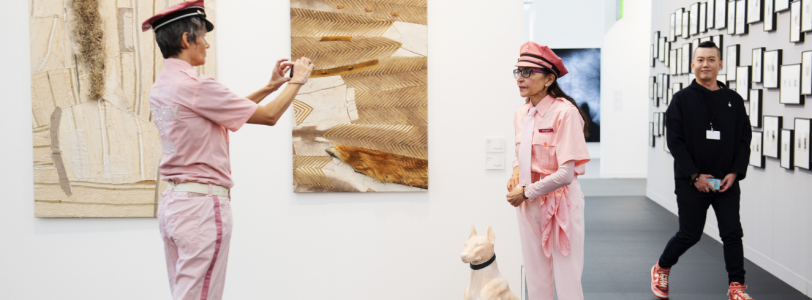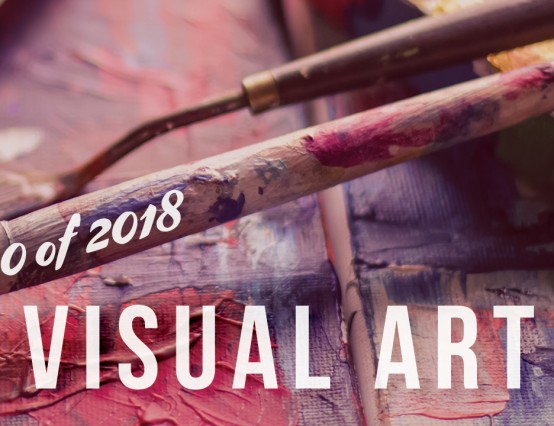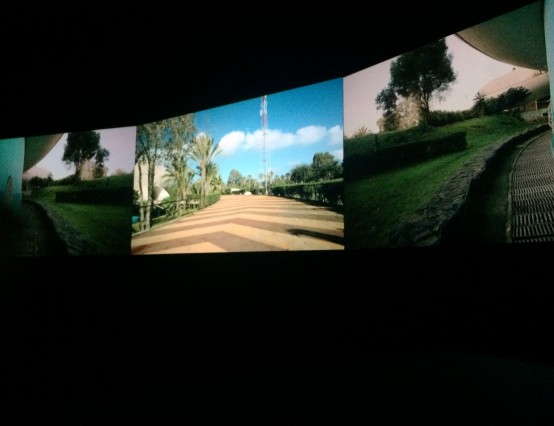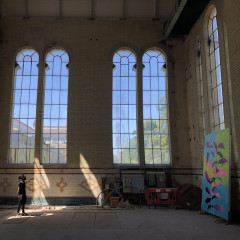What is the value of art, why do we like it, and what is its purpose? Last weekend, I decided to explore these often-unacknowledged questions by celebrating Frieze week, a festive occasion named after the winter season whose onset it welcomes, where art lovers flock to the big city to look and invest in whatever is trending in the world of contemporary art.
To be diplomatic, I visited two Frieze shows - the generic expensive one, as well as a show called Protocol, which has been gratuitously dubbed a ‘subterranean alternative’ to London Frieze, and which annually occupies the underground Q-park behind John Lewis. Unlike Frieze, Protocol is a non-profit event, that has run for 6 consecutive years and featured over 100 international artists. For those of you who have been living in an underground carpark, the Regents Park Frieze fair is an overwhelmingly large art fair that features over 160 of the world’s leading galleries, costs £52 for a combined ticket with Frieze Masters, and whose sponsors (or ‘partners’) include the FT, BMW and Ruinart Champagne among others.
I for one like drinking Champagne and reading the FT whilst driving a huge BMW, but I’ve mentioned them because they play into the narrative that Frieze London is an overblown elitist corporate trade fair, a narrative I was hoping to exploit for the purpose of my review. By visiting Frieze™ and subterranean Frieze in consecutive order, I thought I might find the basis for a critique informed by two radically different approaches to contemporary art, but what really struck me the most from engaging in the festivities was the strikingly similar process of actually viewing the art, however it’s packaged.
Viewing art is a real test of strength and resilience. First there are the mental challenges, which include reconfiguring your brain’s wiring to be able to see things that shouldn’t be, in places they are usually not, and altering your cognitive biases so as to dispel as much cynicism as possible. Then there are the physical challenges that include overcoming ‘museum legs’, a condition induced by walking around in circles punctuated by long pauses. On top of all of this, you are faced with the additional grievances of paranoia and anxiety regarding your own social status and your capacity for understanding what you’re looking at.
I encountered these challenges at both Friezes. From the outset, both exhibitions were physically impenetrable. The underground Frieze was supposedly in Q park, behind the John Lewis, but as the pedestrian entrance was pretty obscure, my friend and I twice risked getting run over as we tried to enter the car park by walking down a ramp designed for vehicles only. In the process, we encountered another hopeful visitor who was similarly confused about how to get in, and we wandered around as a three for a while, until she proved to be a dead weight and we cut her loose. Finally, we managed to get inside Protocol by entering through what looked like a public toilet, emerging into the tepid atmosphere of a circular car park in which people were milling around drinking bottles of equally tepid beer. We noted that a few of them were wearing what looked like futuristic sex doll costumes.
After an awkward rendezvous with the woman we had formerly ditched, we set off to find the source of the beer and look at the art. The artwork we were initially drawn to were the performance pieces, which unfortunately monopolised our experience because they were louder and more visually arresting than the others. The rest of the crowd clearly didn’t feel the same, because they appeared - if anything - slightly scared of the performance artists and were doing their best to ignore them.
One such piece involved a man sat on a chair drinking beer and shouting at people. When I asked him if he was the artist, he shouted at me. Another was a woman also sat on a chair, wearing a blindfold and holding a sign imploring people to whisper a secret into her ear, which were later written down on sheets of paper that were scattered before her. When we arrived, nobody seemed to want to actually whisper any secrets in her ear – maybe they were worried she would lash out at them. Clearly some people had participated in the performance, because a small selection of ‘secrets’ lay before her, including: ‘The only people who want Brexit are stupid’, ‘I hate secrets’, ‘That man over there looks weird’, and ‘I am a serial killer.’ This pretty much confirmed my view that the majority of people who visit art exhibitions are an unhealthy mixture of bigoted, unoriginal, paranoid, and entertain murderous fantasies.
Once we got over the multiple aesthetically and conceptually unattractive set of pieces that made reference to Trump or the Freethenipple campaign, we were able to appreciate that some of the art was quite interesting, such as a texturally intriguing piece by Stacie McCormick, or a sculptural assemblage by Gina Southgate that explored questions of ownership – appropriate to an exhibition that implicitly entertains a vaguely anti-capitalist sentiment. Protocol deserves to be praised for making unique use of space. In a bid to be democratic, the artists names are unpronounced, and there is little demarcation of any boundaries between the pieces, enabling you to pretty much walk into a piece of work. This structure encourages you to get involved, but generally people seemed unwilling to make use of the opportunity to collaborate, and mainly stuck to the outskirts.
Once I managed to navigate my way into Frieze™, which was equally difficult because it’s so large, I noticed that the space appeared to be similarly in conflict with its audience. Yet contrasting Protocol, here people were constantly being prevented from touching things. I looked on as one child nearly destroyed a sculpture made of pans whilst the artist looked on with a strained smile, before chatting to a man I believed to be an artist because he was standing creepily close to a sculpture, but in fact turned out to be someone hired to stop people touching it. In all fairness to the crowd, the piece itself was incredibly tactile – a beautiful, crumpled hunk of aluminium created by Carol Bove, represented by the David Zwirner gallery.
Like Protocol, Frieze™ proved that spectacle isn’t everything – the various bodies stuffed into bags and left on the ground were too grotesque and uninspired for me to care about their concept, and the massive tree thing at the start looks like its construction involved more technical effort than it was worth. Frieze™ makes clearer the distinction between what is and isn’t art than Protocol – pretty much everything is art, and the galleries are neatly separated according to global location. I didn’t see anybody dressed like a futuristic sex doll, and most people smelled extremely wealthy. Nevertheless, it exuded the same atmosphere of paranoia, as people spoke in hushed tones whenever they criticised something - perhaps in case the artist was nearby, or more likely because they were worried that their opinion of the art was wrong.
Overall, I enjoyed both of the shows, the constant awareness of the threat of social embarrassment, and the careful posturing. The most surprising thing I took away from Frieze™ is that you can enter the show even if you are dead – two of my favourite pieces disappointingly turned out to be by the deceased Vlassis Caniaris and Robert Rauschenberg. Two other valuable lessons I took away from the experience was that if you have to ask somebody if they are the artist - they probably aren’t, and they might shout at you; finally, just because everybody appears to be drinking alcohol, that doesn’t mean that it’s easily accessible.









Great review! I would have loved to see the futuristic sex doll outfits! I'm someone who doesn't really like to get involved in any collaborative arts; I'm more of an "standing-on-the-outskirts" type of person. Do you think Protocol is still something I could enjoy, or is it very in-your-face arty?